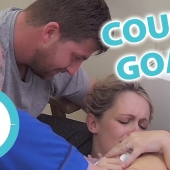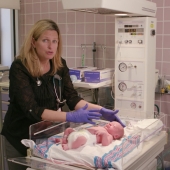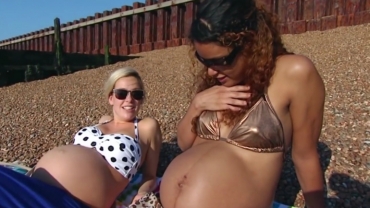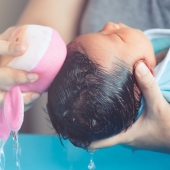Chances are you'll be doing this a lot in the next couple of years, so we thought we'd help you with a few tips! First, wash your hands and ensure you have a nappy, wipes and any creams you might need, within reach. Place your baby on the change table or a flat surface.
Do not leave your baby, they could roll off causing serious injury. Always keep one hand on your baby. Start by taking off the dirty nappy - it helps to have a bin or bucket beside the change table. Lift up your baby's legs so you can have access to their bottom. Then use the wipes to give your baby a thorough clean. Ensure that you wipe front to back, not in reverse. This will help to avoid any infection. Then take the clean nappy, and place it underneath them with the tab part of the nappy under their back.
If your baby has a rash, this is the time to use the barrier cream or dip cotton balls in warm water and dab the affected area. Use the tabs to wrap around your baby's tummy and stick them down securely. If your baby's umbilical cord stump is still attached, fold over the top of the nappy so that it doesn't rub. Then, take your baby off the changing area, wash your hands and you're all done. To prevent nappy rash, babies need changing as soon as possible when they've done a poo. Also, try and give them some nappy-free time, before their bath is often easiest.
Young babies need changing as often as 10 to 12 times a day while older babies need to be changed at least six to eight times per day. So the difference is with changing a girls and a boys nappy; for a girl's nappy change you'd want to make sure that you're wiping from the front to the back. So it's very important that you go just one motion downwards. And with the boys snappy you want to make sure that you face their penis downwards just so they don't have an accident when they pee upwards.
- 80 views













